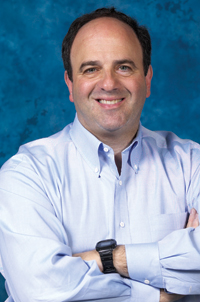 As a kid growing up in Atlanta, Richard Galanti spent a lot of time in retail stores. His father and three uncles each owned a store, and he worked for them stocking shelves, pricing and selling items. That may seem a far cry from serving as finance chief at Costco, the big-box retailer with $71.4 billion of revenue in 2009. But Galanti, who has worked at Costco for 27 years, is no ordinary CFO. “I'm also head of HR,” he explains, “and I also get involved in the retail business, at least from 10,000 feet.”
As a kid growing up in Atlanta, Richard Galanti spent a lot of time in retail stores. His father and three uncles each owned a store, and he worked for them stocking shelves, pricing and selling items. That may seem a far cry from serving as finance chief at Costco, the big-box retailer with $71.4 billion of revenue in 2009. But Galanti, who has worked at Costco for 27 years, is no ordinary CFO. “I'm also head of HR,” he explains, “and I also get involved in the retail business, at least from 10,000 feet.”
Galanti came to Costco with another valuable piece of experience: five years as an investment banker at Donaldson Lufkin & Jenrette, now a part of Credit Suisse. In 1983, DLJ handled a $16.9 million mezzanine financing for Costco. The company immediately drafted Galanti, who handled that financing, as its CFO. “They thought I knew what to do,” he laughs. A decade later, Galanti added the human resources title, giving him a dual portfolio that he thinks may be unique for a Fortune 500 CFO.

Richard Galanti
“My biggest role is still providing timely and correct data to everyone in the company who needs it,” he says, “but more broadly, it's about figuring out how do you fuel growth, and how do you communicate with people.”
One tough communications job that falls to Galanti is explaining to a skeptical Wall Street why treating workers well is good business. Unlike many of its competitors, Costco has long offered employees relatively high wages and a “quality” health plan mostly funded by the company. While many employers shifted premium costs onto employees during the late '90s, Costco held contributions flat from 1994 to 2003, so that the employee share of premiums actually fell from 12.5% to 5%. In 2003, when Costco chairman Jeffrey Brotman realized the employee contribution had to go up, he still insisted that their share of the cost not exceed 10% and that the increase be phased in over four years “so people won't get hit all at once.” Says Galanti, wearing his HR hat, “Don't think treating employees that way doesn't have an impact.”
In one way, Galanti's lucky. While many CFOs have been struggling through a brutal period of frozen credit, evaporating cash pools and shrinking sales, Costco, which offers low prices on popular consumer items, has picked up some business from consumers turning away from smaller and pricier retailers.
“Even when the economy went south fast in late '07 and during '08, we were the extreme value position,” Galanti says. “We saw some falloff in jewelry and furniture sales, but half of our business is food and consumer goods, which haven't suffered.”
Before the recession, Costco typically saw its same-store sales increases in the 6% to 8% range. Those same-store sales are now coming in flat to up 4%. But Galanti notes, “We're still arguably cash-rich, so our problem is how to spend it–on dividends, on investment, on stock buybacks?”
Now there's a problem a lot of CFOs today would love to have.
© 2025 ALM Global, LLC, All Rights Reserved. Request academic re-use from www.copyright.com. All other uses, submit a request to [email protected]. For more information visit Asset & Logo Licensing.

